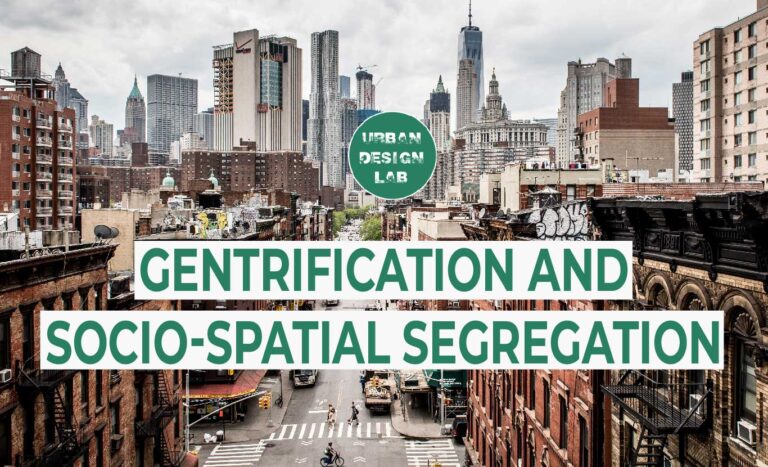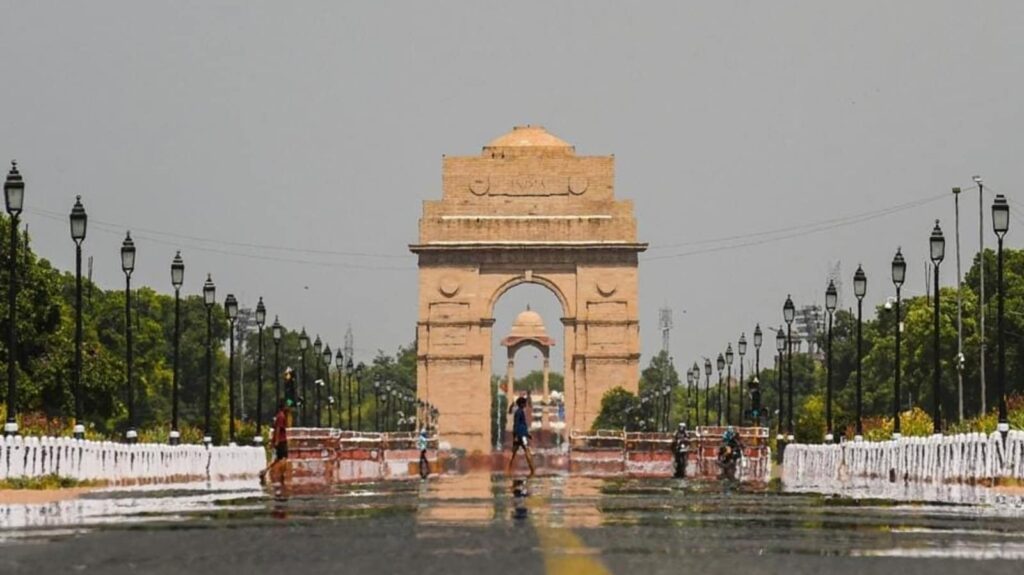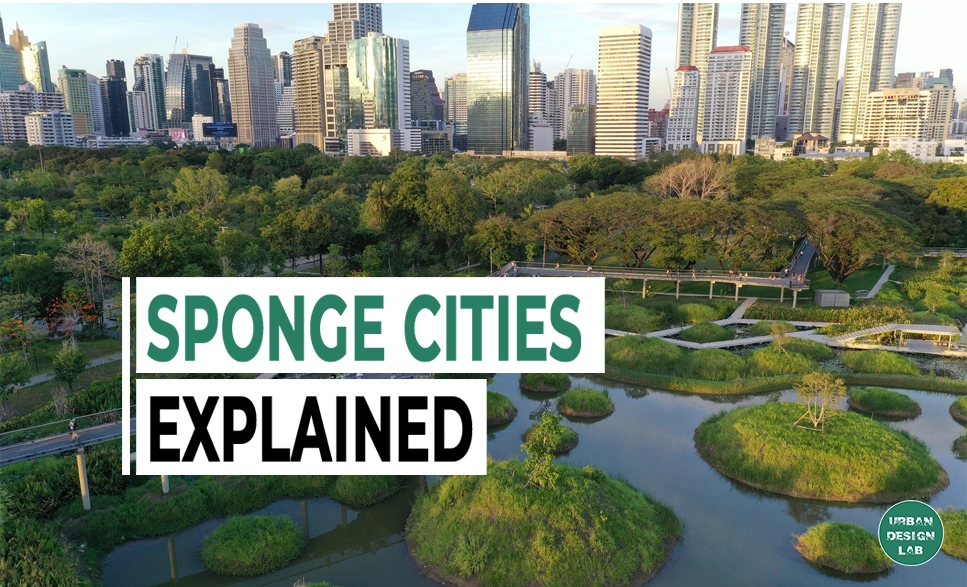
Shifting through the Masterplans of Delhi

Masterplans
Urbanization in India has increased at a very high pace. The population residing in urban cities in India is higher in contrast to the other Urban centres in the world. The trend of the rising population will continue in the next decade as more and more people shift to urban centres with the hope of improving their quality of life. The urban context in India is missing its definition. The sprawled and haphazard manner of urbanization is adding to the issues faced by the people. The shortcoming of the foundation; urban planning needs to be figured out with input from urban planners.
One of the primary tools for the laborious task of Urban Planning is drafting the Master Plan of the cities in the country, which functions as the fundamental guiding principle for the development. Master plans include the regulation of land uses in the city and the vision for future development. The plan outlines the development module as per the projected populations and requirements in conjecture with the building regulations.
The task of drafting the master plans lies with the state authorities, it is taken up by the Town and Country Planning Departments in the country, formulating the Master plans to regulate the land use and development of the city for 10-20 years, it is a centralized system linked with bureaucracy with local bodies as well as local participation such as municipal corporations missing from the scene.
The transfer of power from the state authority to the urban bodies or local bodies was supposed to take place as per the 74th Constitutional Amendment. According to the amendment, a Metropolitan Planning Commission is mandated to be formed with two-thirds of its members as elected representatives and tased with the drafting of the Local Area Plans. In many cities, the decentralization of power has still not progressed. (Banerji, 2021)
MPD-1962
The first Master plan came out in the year 1962 with the strategy focused on decreasing the population density in the old city and increasing the density in New Delhi and Civil Lines. The infrastructure development had to be carried out as per the requirement, in accordance with the envisaged land uses and development in the regions. The plan also proposed the development of satellite towns; Ghaziabad, Faridabad, Gurgaon, Bahadurgarh, Loni, and Narela.
The vital aspects of the plan included: –
- Improving health conditions, decongesting the Old Delhi, and tackling environmental issues.
- Context-based planning.
- Decentralisation of employment-with help from satellite towns and the development of residential pockets in the city.
- Conservation of areas having organic patterns and checking encroachment.
- Architecture not be confined only to monumental and cultural centres but all buildings (Authority, Master Plan for 1962, 1962)
Large portions of vacant land were to be acquired and used for the development of various land use categories, with the public sector leading the development (Aijaz, 2021). The squatters in the slums were to be relocated and integrated into the community. Newer areas of the urban regions were planned for the same with the economical housing units following the standards. (Authority, Master Plan for 1962, 1962)
No checks were planned by the DDA for the haphazard and unplanned development in the city. The land uses existing on private land before the 1962 MP, were allowed to continue irrespective of the land use specified in the Master plan or the Zonal Development plan. The same was continued ahead. Disaster management did not feature in the planning. (Singhal, 2020)
MPD-2001

The development was envisioned as a public sector-led process but that was changed after the economic reforms of the nineties. The three-level hierarchies that were maintained were the Master plan, Zonal Development plan, and Layout plans.
The key points included were: –
- Planning of Delhi as an integral part of the region
- Central core city as a- ‘Special Area’.
- The decentralization in terms of density was continued.
- Conservation of urban heritage and ecological balance
- Urban development-Low rise and high density
- Multi-model mass transportation system (DDA)
- The points were included in the preamble, and the definition of the city of Delhi as a focus of socioeconomics, political and cultural heritage.
The provisions for the city were based on the estimated population of 12.8 million in the year 2001. The unauthorized colonies and urban villages needed to be provided with the basic facilities, new freight complexes, traffic control, district centres, channelization of the Yamuna River along with the development of riverfronts. Walled cities were to be extended to ease congestion and the social and physical infrastructure was to be upgraded. Industries were classified and according to the designation were allowed to function in the residential areas, the incompatible industries were to be shifted to regional towns and industrial cities in other regions. (Authority, Master Plan for 2001, 1990) The Concept of partially built plotted housing was introduced for up-gradation of built housing to achieve the residential density of 350-400 persons per hectare. (Singhal, 2020)
Plan monitoring and review were highlighted to be achieved through the creation of a monitoring unit with data analysis in terms of progress and to track the socio-economic changes to generate data for further improvement of plans.
MPD-2021
Vision-2021 is to make Delhi a global metropolis and a world-class city, where all the people would be engaged in productive work with a better quality of life, living in a sustainable environment. The major factor remains in-migration in the city and providing housing and other adequate infrastructure services. Upgrading the old and dilapidated structures conservation of environment along with preserving the heritage of the city within a framework of sustainable development. Public, private, and community participation is encouraged, increasing the sense of belonging and ownership among the citizens.
The major component of the MPD-2021 includes the redevelopment and densification of the existing urban areas. A comprehensive strategy is required to accommodate more people and improve infrastructure requirements along with increasing the open spaces in the city.
The development in accordance with the last two master plans in terms of infrastructure and services has been in conjunction with the population growth and urbanization requirements but the provisions related to water and electricity have not been able to match the pace of development.
The unauthorized colonies continue to pose a challenge to the urban planners, not only in the terms of present scenarios but also in terms of future growth. Another major issue that the plan had to tackle was the phenomenal rise in the automobiles in the city, which has increased pollution and added to the woes of congestion and parking.
The key points of the plan were-
- Optimum utilization of land
- Public participation and performance-oriented planning, with a focus on implementation and monitoring
- Redevelopment-by providing additional FAR
- Zones along the major transport corridor
- Private sector participation in terms of housing and moving shifting group housing
- Mandatory provision of EWS, to keep it viable and economical to prevent the growth of slums
- Conservation of ridges, Rejuvenation of Yamuna River, treater of water through STPs
- Providing lung spaces and green belts.
- Catering to the requirements of commercial activities in mixed-used categories
- Defining hawkers and markets zones and provision of basic services
- Industries categorization and inclusion for sustainable norms
- Defining mixed-used zones to cater to the commercial activities
- Private sector development of parking spaces
- Disaster management centre in each administrative zone. (Authority, Master Plan for Delhi 2021., 2007)
The development of sub-regional plans was also recommended as half of Delhi’s area was already urbanized and by 2011, over 93% of Delhi’s population was living in the areas classified as urban (Aijaz, 2021)
MPD-2041
The vision of the proposed master plan is -To foster a Sustainable, Liveable, and Vibrant Delhi. The three major goals to be pursued have been divided over the plan period, these are-
- Goal G1- Become an environmentally sustainable city that provides a healthy environment for its citizens and is adaptable to address the impacts of climate change.
- Goal G2- Develop a future-ready city that offers a good quality, affordable and safe living environment with efficient mobility systems.
- Goal G3- Emerge as a dynamic place for economic, creative, and cultural development.
The key objectives are as defined below-
- Rejuvenation of natural assets such as forests, and Yamuna River, using wastelands sites, and landfills, reducing pollution, increasing green in-built spaces, supporting urban farming,
- Promote green economies, Unique economic role for Delhi while keeping the linkages with NCR and improving the investment climate, supporting the unorganized sector, and identifying and promoting clean economies.
- Build strong economic linkages and create opportunities for a cultural experience, tourism, and active public life, ensuring safety in public areas and promoting nightlife.
- Meet housing demands across different income groups and typologies, regeneration of older built fabric, meet demands for social infrastructure and walkable mix used neighbourhoods.
- Encourage public and shared modes of transport, homes, and job closer to the mass transit system, reduce vehicular congestion, provide green mobility corridors, create walkable and cycling areas, and use low carbon technologies-electrical vehicles.
- Sustainable approach towards the use of water and energy, adequate and uninterrupted services so that city is ready in terms of digital infrastructure and resilience to shocks and disasters. (Aijaz, 2021) (Authority, Draft Master Plan for Delhi-2041)
All these years of lack of people’s participation in the planning process have led to drawbacks and failures in the Master Plans. In MPD-2041, several stakeholders were consulted during its preparations and helped DDA to understand the local issues and collect 5000 vision statements from the stakeholders (Banerji, 2021). At present, the DDA is working on assessing and incorporating around 33000 suggestions and objections that have been received from the public last year till the end of last year (Khan, 2022).
Conclusion
Master planning is a technocratic exercise in terms of the state bodies involved, which is changing with the increased participation of the public. Master plans have been lacking when it comes to controlling urban sprawl in Delhi itself as regularised colonies in Delhi have gone up from 110 in 2001 to 1797 in 2020 ahead of the assembly elections irrespective of the fact that the process of regularization of colonies has been going on since the ’90s (Mishra, 2021).
Conflicting opinions among different groups in the society can arise which can be beneficial for one and restricting for other, which demands the intervention of the city planners, for example-RWAs wish to restrict further commercialization due to congestion but Market Trader Associations desire an infrastructure improvement to accelerate commercial growth.
Delhi being exempted from the 74th constitutional amendment, the local population is stripped of the process to prepare local area plans. (Banerji, 2021) The violation in the Master plan in the city of Delhi is huge, in areas of North and South Delhi municipal corporations the master plan was violated to the effect of 50% and up to 70% in East Delhi municipal corporation, whereas the standard international rate of master plan violation is 25%. (Mishra, 2021)
Master plans have to be envisioned into Local area plans, to work on the ground level and mitigate the issues to the largest extent along with overlooking the implementation of the provisions of the same. At present in Delhi and all the other major cities where the Metropolitan Planning Commission is missing, the vested interests of real estate developers and a few influential individuals can suppress the local interest in the development. The implementation and effectiveness of Master plans cannot be ascertained as either the data is missing or the on-ground reality differs from the provisions on paper. There is an alarming need to preserve the ecological contexts of the regions rather than letting urban sprawl encroach or proposing new development on the parcels, the need to respect the present resources is a must as urbanization has to be inclusive of all the things and not just the needs of the people and betterment of life.
The reports of shortcomings of the Master Plan-2041 have flooded the media, with the DDA still in the process of working on the suggestions, the vision of Delhi Master Plan-2041 needs to be looked out for.
References
Aijaz, R. (2021, March ). Delhi Master Plan-2021-2041;Towards a People’s City? Retrieved from Observer Research Foundation : https://www.orfonline.org/research/delhi-master-plan-2021-41-towards-a-peoples-city/#sdfootnote10sym
Authority, D. D. (1962, 09 01). Master Plan for 1962. Retrieved from Delhi Development Authority : https://dda.gov.in/master-plan-1962
Authority, D. D. (1990, 08 01). Master Plan for 2001. Retrieved from Delhi Development Authority : https://dda.gov.in/master-plan-2001
Authority, D. D. (2007, 02 07). Master Plan for Delhi 2021. Retrieved from Delhi Development Authority : http://119.226.139.196/ddaweb/planning.aspx
Authority, D. D. (n.d.). Draft Master Plan for Delhi-2041. Retrieved from Delhi Development Authority : http://119.226.139.196/ddaweb/MPD_2041.aspx
Banerji, B. M. (2021, 05 27). As Delhi works on Master Plan 2041, time to rethink city plans from the bottom up. Retrieved from Citizen matters : https://citizenmatters.in/delhi-master-plan-2041-local-plans-and-public-participation-25077
Khan, M. (2022, 02 28). MPD-2041 to take six more months to notify: DDA Vice-Chairman. Retrieved from The Hindu : https://www.thehindu.com/news/cities/Delhi/draft-master-plan-for-delhi-2041-to-take-six-more-months-to-notify-dda-vice-chairman/article65087612.ece
Mishra, S. (2021, 06 14). Delhi Master Plan: Six decades of unsolved housing woes. Retrieved from The new Indian Express: https://www.newindianexpress.com/opinions/2021/jun/14/delhi-master-plan-six-decades-of-unsolved-housing-woes-2315793.html
Singhal, A. (2020). Master Plans for Delhi . Research Gate , 13.
Saksham is a writer, researcher, architect and an editor. He is enthusiastic about the natural environment and concerned about preserving the natural essence of space. He believes that words emanating from the soul level have the potency to touch millions of others without any efforts.
Related articles


Mobility crisis in cities around the world

Best Laptops for Architects, Planners and Designers

Waste Management System: The way ahead

Integration of Rivers in Urban Development
5-Days UDL GIS
Masterclass
GIS Made Easy – Learn to Map, Analyse, and Transform Urban Futures
Session Dates
14th-18th July 2025

Free E-Book
From thesis to Portfolio
A Guide to Convert Academic Work into a Professional Portfolio”
Recent Posts
- Article Posted:
- Article Posted:
- Article Posted:
- Article Posted:
- Article Posted:
- Article Posted:
- Article Posted:
- Article Posted:
- Article Posted:
- Article Posted:
- Article Posted:
- Article Posted:
- Article Posted:
Sign up for our Newsletter
“Let’s explore the new avenues of Urban environment together “





















































